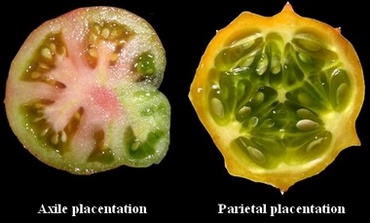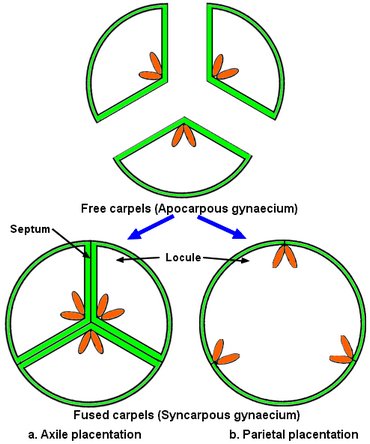The following pictures show the 2 main categories of placentation : – when placentation is axile, placentas link seeds and fruit axis : example of a tomato (Lycopersicon esculentum, Solanaceae), – when placentation is parietal, placentas link seeds and fruit wall : example of a kiwano (Cucumis metuliferus, Cucurbitaceae).  The following sketch explains the different evolution states from free carpels in an apocarpous gynaecium to fused carpels in a syncarpous gynaecium with axile or parietal placentations: – Axile placentation. Carpel sides are fused together in septa (plural of septum). Carpel margins are found on the axis of the composed ovary. Ovary is plurilocular. Placentas (conducting tissue for ovules) and ovules are located along the ovary axis: placentation is axile. – Parietal placentation. Carpels are fused by their margins and placentas develop along the composed ovary wall. Ovary is unilocular.
The following sketch explains the different evolution states from free carpels in an apocarpous gynaecium to fused carpels in a syncarpous gynaecium with axile or parietal placentations: – Axile placentation. Carpel sides are fused together in septa (plural of septum). Carpel margins are found on the axis of the composed ovary. Ovary is plurilocular. Placentas (conducting tissue for ovules) and ovules are located along the ovary axis: placentation is axile. – Parietal placentation. Carpels are fused by their margins and placentas develop along the composed ovary wall. Ovary is unilocular. 
